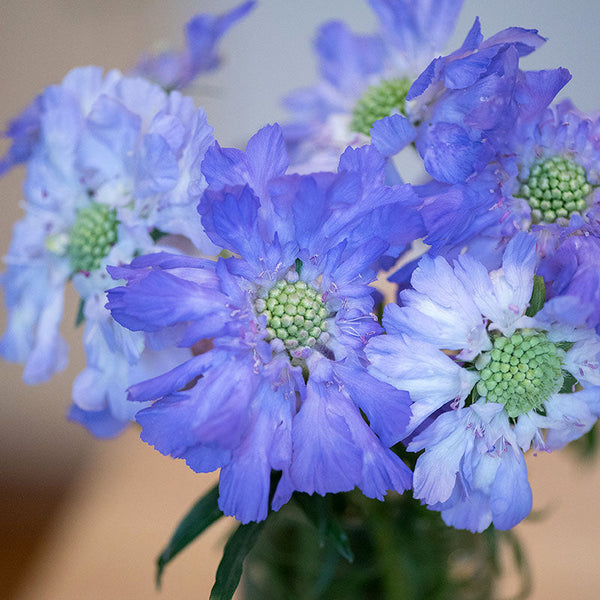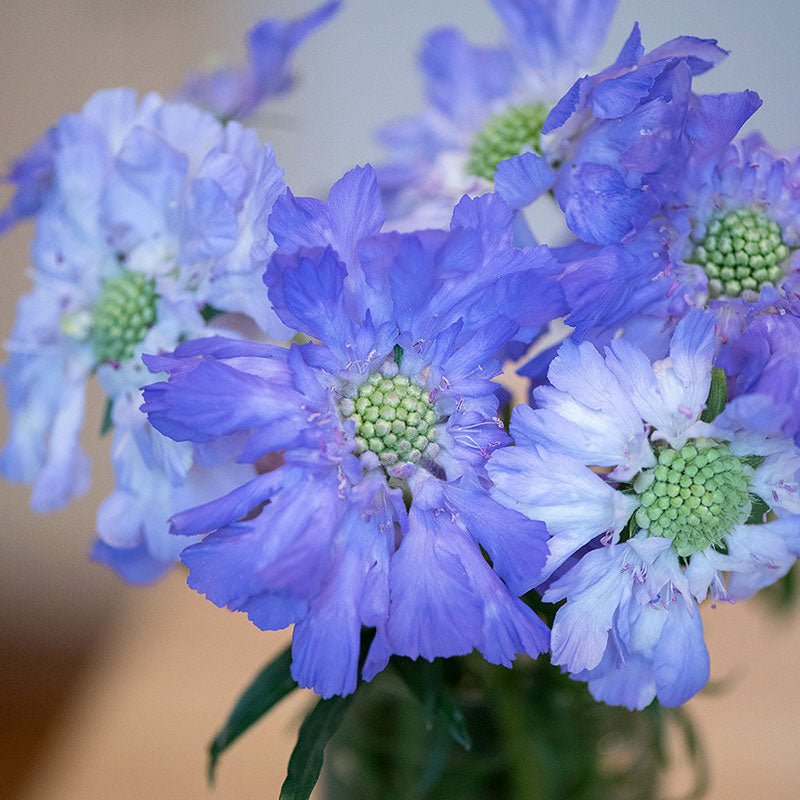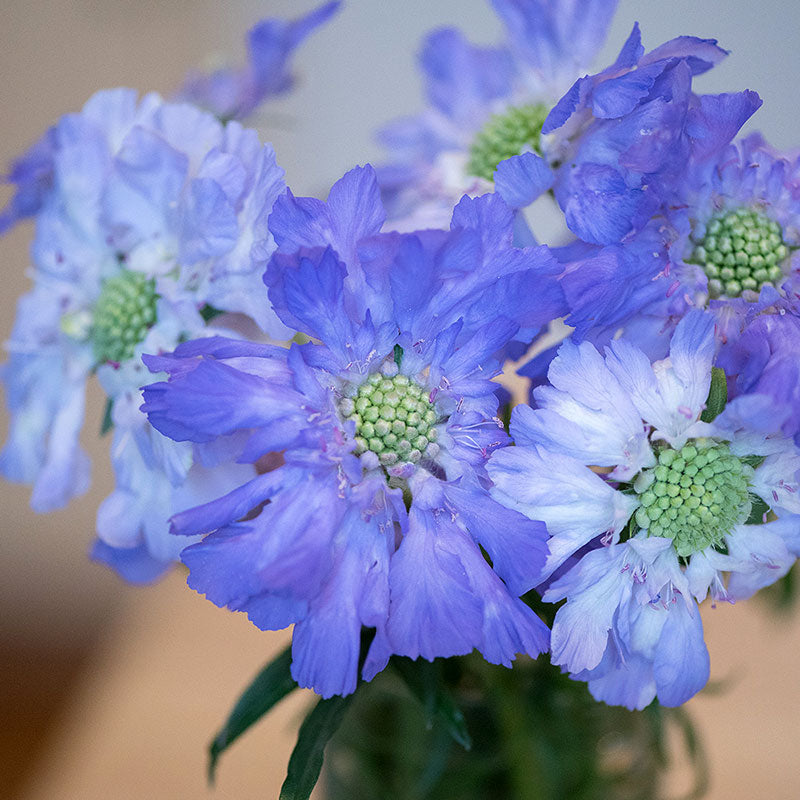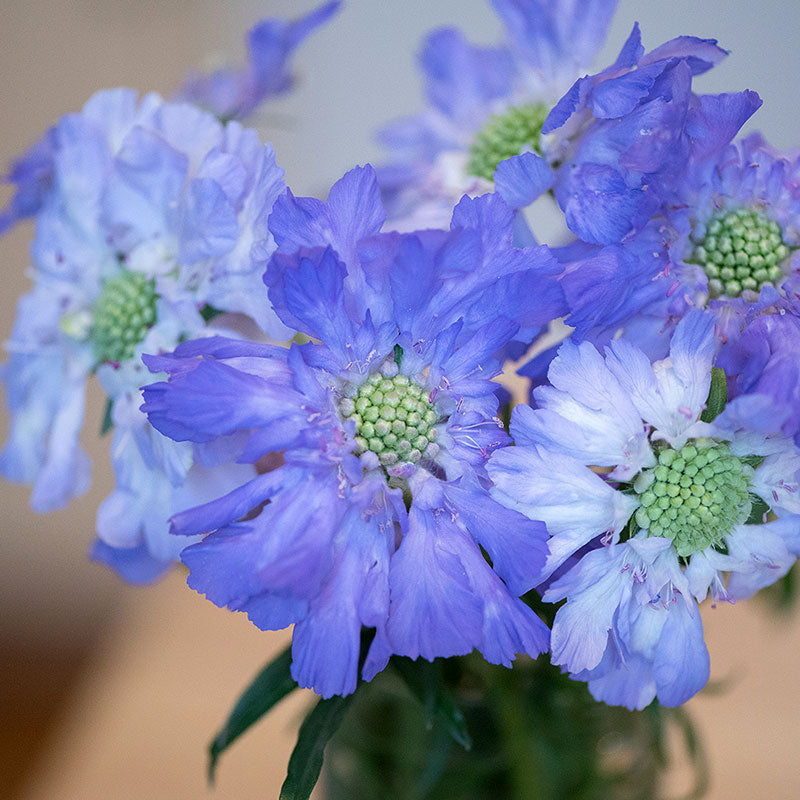SOWING INSTRUCTIONS
Depth:
Surface sow and lightly press in.
Starting Indoors:
Recommended. Start indoors in late winter. Keep at 70-75°F and cover with a sprinkling of vermiculite or a humidity dome to aid germination.
Starting Outdoors:
Direct sow after frost to early summer for flowers the following year.
PLACEMENT & CULTIVATION
Pincushion flower has a ruffle of petals surrounding large beaded centers, making their debut on long, lithe stems. A sought after cut flower, they grow best in temperate summer areas where nights cool down, established clumps blooming in spring to early summer. Deadhead to promote additional flowers and site along well-drained garden edges and mid-border. Winter survival is enhanced by pruning back in late fall and using gravel or evergreen boughs as mulch. A pollinator favorite that will bring your garden alive!
Watering Details:
About 1" per week, though it will tolerate some drought once established.
Fertilizer:
Mix in about 2-4" of compost prior to planting out. Topdress with a thin layer the following spring, or incorporate a slow release organic fertilizer.
Diseases & Pests:
No major pests or diseases.
When to Cut for Bouquets:
When flowers just start to open.

































